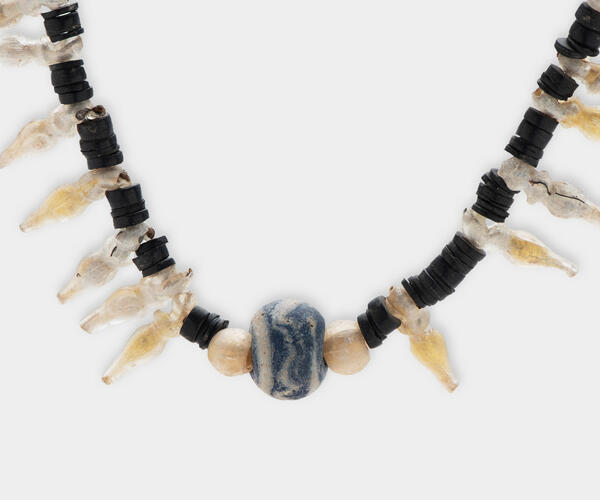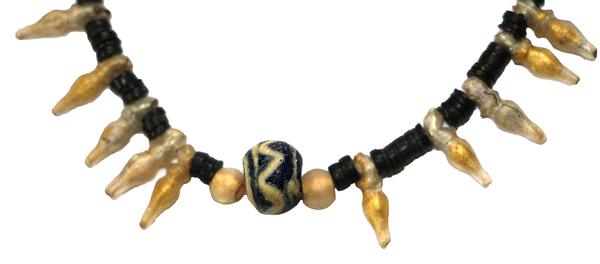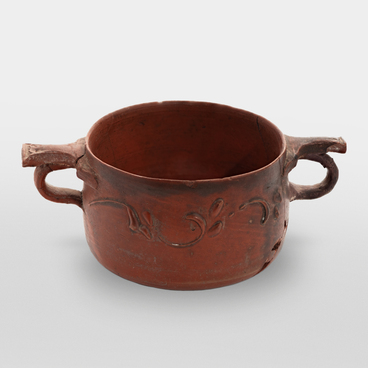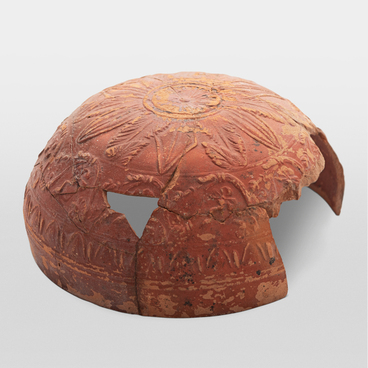The exhibition of the Tanais Archaeological Museum-Reserve features a glass bead necklace discovered at the Tanais necropolis dating back to the 2nd century BCE.
Each bead is shaped like a miniature amphora, with internal gilding that makes the necklace unique. During the time of Tanais, glass was as valuable as semi-precious stones. Because of that, jewelers often used glass in combination with precious metals and gems. To create this necklace, a thin gold wire was placed in the mold. After that, the mold was filled with liquid glass. Thanks to this technique, the beads were particularly strong and beautiful. There is a reason why the makers chose the amphora shape for these beads. In ancient times, amphorae were a common type of ceramic container and were used in everyday life. As a result, there was a demand for amphora-shaped jewelry. Bead necklaces were worn by both women and men, with citizens using beads to embroider the edges of their clothing, such as necks, sleeves, and hems. The inhabitants of Tanais embellished their handbags and shoes with beads, seeking creative ways to enhance and diversify their appearance. The necklace showcases a variety of bead shapes, including miniature amphorae and rounded beads with a gilded inner surface, blue polychrome glass beads featuring a white zigzag pattern, and numerous small jet beads in the shape of discs.
The fact that ancient jewelers placed gold wire inside the mold before pouring the glass indicates that they were skillful and attentive to detail. Additionally, the use of various colors and patterns on the beads shows the diversity of designs and aesthetic preferences among the inhabitants of ancient cities. A glass bead necklace was not merely a piece of jewelry, but also served as evidence of social status and cultural traditions among the people of the Northern Black Sea Region. The discovery of this necklace in the Tanais necropolis suggests that the beads were used in funeral rituals and may have had a symbolic meaning.



